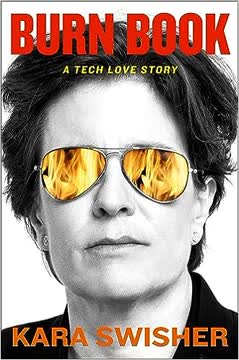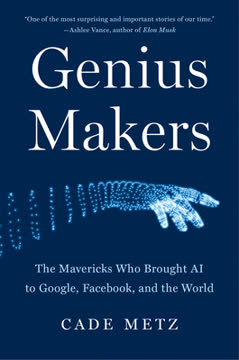Key Takeaways
1. The Advertising Industry's Seismic Shift: From Mad Men to Math Men
"It used to be Mad Men. Then it became Media Men. Now it's Math Men."
Evolution of advertising. The industry has transformed from the creative-driven "Mad Men" era to the data-centric "Math Men" age. This shift reflects the growing importance of technology, analytics, and targeted messaging in modern marketing strategies.
Key drivers of change:
- Rise of digital platforms (e.g., Google, Facebook)
- Increased focus on measurable ROI
- Proliferation of consumer data
- Adoption of programmatic advertising
- Emergence of AI and machine learning in marketing
The traditional agency model, centered around creative departments and long-standing client relationships, is being challenged by new players who prioritize data-driven decision-making and quantifiable results.
2. Trust Issues Plague Agency-Client Relationships
"Characterizing the rebates as 'criminal extortion,' he said of the giant advertising holding companies, 'At least four of them, maybe five, are doing this.'"
Erosion of trust. Jon Mandel's 2015 speech to the Association of National Advertisers (ANA) ignited a firestorm of controversy, accusing agencies of accepting rebates and kickbacks from media companies at the expense of their clients.
Consequences of the trust crisis:
- Increased scrutiny of agency practices
- More frequent agency reviews by clients
- Rise of in-house marketing departments
- Growing demand for transparency in media buying
- Shift towards performance-based compensation models
The breakdown in trust has led to a fundamental reassessment of the agency-client relationship, with many advertisers questioning the value and integrity of their agency partners.
3. Digital Giants Disrupt Traditional Advertising Models
"Facebook and Google are a digital duopoly. They have two thirds of mobile ad revenue, and it's growing."
Dominance of tech platforms. Google and Facebook have emerged as the dominant forces in digital advertising, capturing a significant share of ad spend and reshaping the industry landscape.
Impact of digital giants:
- Concentration of ad spend on a few platforms
- Direct relationships with advertisers, bypassing agencies
- Accumulation of vast amounts of user data
- Development of sophisticated targeting capabilities
- Creation of walled gardens that limit data sharing
Traditional media companies and agencies are struggling to compete with the scale, reach, and targeting capabilities offered by these digital behemoths, forcing them to adapt or risk obsolescence.
4. Data and AI: The New Currency of Marketing
"We know what you want even before you know you want it."
Data-driven marketing. The proliferation of consumer data and advancements in artificial intelligence have revolutionized how marketers understand and target their audiences.
Key developments in data and AI:
- Predictive analytics for consumer behavior
- Personalized messaging at scale
- Automated media buying and optimization
- Real-time campaign performance tracking
- AI-powered content creation and curation
As data becomes increasingly central to marketing strategies, agencies and brands are investing heavily in data science capabilities and AI-driven tools to gain a competitive edge.
5. Consumer Resistance to Advertising Grows
"Eighty-four percent told us they don't like advertising."
Ad fatigue. Consumers, particularly younger generations, are increasingly resistant to traditional advertising methods, leading to the rise of ad-blocking technology and subscription-based, ad-free content platforms.
Factors contributing to ad resistance:
- Information overload and constant ad exposure
- Perception of ads as intrusive and irrelevant
- Growth of ad-free streaming services (e.g., Netflix)
- Increased use of ad-blocking software
- Preference for authentic, non-promotional content
Marketers are being forced to rethink their approaches, focusing on creating value for consumers through content, experiences, and meaningful brand interactions rather than relying on interruptive advertising.
6. The Rise of Content Marketing and Native Advertising
"Nirvana is when you can't tell the difference between the content and the advertising."
Blurring lines. As traditional advertising loses effectiveness, brands are increasingly turning to content marketing and native advertising to engage audiences in less intrusive ways.
Key trends in content and native advertising:
- Brand-produced editorial content
- Sponsored articles and videos
- Influencer partnerships
- Branded entertainment and storytelling
- Integration of products into content narratives
While these approaches can be effective, they also raise ethical concerns about the blurring of lines between editorial and advertising content, potentially eroding consumer trust in media.
7. Uncertainty Looms Over Traditional Media's Future
"What is declining is people watching the ads."
Traditional media challenges. Television networks and print publications face an uncertain future as audience fragmentation, cord-cutting, and the shift to digital platforms erode their traditional business models.
Threats to traditional media:
- Declining linear TV viewership
- Growth of ad-free streaming services
- Shift of ad dollars to digital platforms
- Difficulty in proving ROI for traditional ad buys
- Competition from user-generated content
Media companies are experimenting with new revenue models, including direct-to-consumer streaming services and data-driven advertising offerings, to remain relevant in the digital age.
8. Privacy Concerns Shape the Future of Targeted Advertising
"The key thing we see in privacy is that companies have made a decision to privatize privacy."
Privacy backlash. Growing concerns about data privacy and the implementation of regulations like GDPR are forcing marketers to reevaluate their data collection and targeting practices.
Key privacy developments:
- Increased scrutiny of data collection methods
- Implementation of opt-in consent requirements
- Restrictions on third-party cookies
- Rise of privacy-focused browsers and tools
- Growing demand for transparency in data use
The privacy landscape is reshaping how marketers approach personalization and targeting, with a growing emphasis on first-party data and contextual advertising.
9. The Evolving Role of Creative in a Data-Driven World
"Execution can become content. It can be just as important as what you say."
Balancing art and science. While data and technology have become increasingly important, the role of creativity in marketing remains crucial for capturing attention and building emotional connections with consumers.
Evolving creative approaches:
- Data-informed creative development
- Dynamic creative optimization
- AI-assisted content creation
- Personalization at scale
- Integration of creative and media strategies
Successful marketers are finding ways to leverage data and technology to enhance and amplify creative ideas, rather than replacing human creativity entirely.
10. New Players Enter the Marketing Ecosystem
"We're not trying to disrupt agencies. . . . I know people don't believe that."
Expanded competitive landscape. The traditional agency model faces competition from new entrants, including consulting firms, technology companies, and in-house brand teams.
New players in marketing:
- Management consulting firms (e.g., Accenture, Deloitte)
- Tech giants (e.g., IBM, Oracle)
- In-house brand creative teams
- Specialized digital agencies
- Content creators and platforms
These new entrants are challenging the traditional agency model by offering integrated services that combine strategy, technology, and creative capabilities, forcing established agencies to evolve or risk losing market share.
Last updated:
Review Summary
Frenemies: The Epic Disruption of the Ad Business (and Everything Else) received mixed reviews. Some praised its insights into advertising industry changes, while others found it too insider-focused. Readers appreciated the analysis of digital disruption, big data's impact, and profiles of key players. However, many felt it lacked depth, coherence, and broader cultural analysis. Critics noted its gossipy tone and overemphasis on certain individuals. The book's exploration of advertising's evolution from creative-driven to data-driven resonated with industry professionals, though some found it outdated or superficial.
Similar Books










Download PDF
Download EPUB
.epub digital book format is ideal for reading ebooks on phones, tablets, and e-readers.





